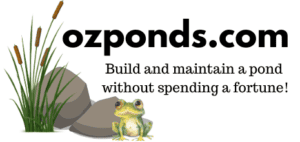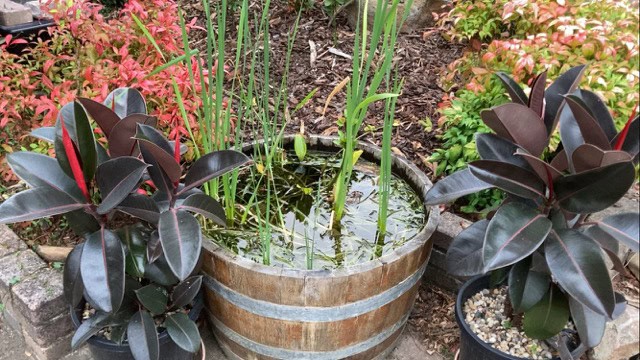I’ve been keeping fish for quite a long time. My setups typically include a pebble substrate, some common live plants, a few rocks, and some driftwood.
I’ve always been pretty vigilant with my water changes, sometimes they would slide for a few weeks. Nevertheless, I managed to get one done at least once a month.
As I delved deeper into the world of aquatic ecosystems, my journey took an interesting turn with the introduction of shrimp and the exploration of various filtration methods, ultimately leading to the discovery of dirt-based ponds and aquariums.
In this post I’d like to talk about some of my observations overtime. If you would rather watch a video, you can view the youtube video I recently published.
The Aquarium Beginnings
Initially, in my aquariums I started with pretty common tropical fish. I would have a simple pebble substrate, some live plants, a filter (I’ve tried lots of different filters) and I would do a regular 10-20% water change.
This has worked quite well and I have many of the original fish, some are now over 15years old. As time went on I got more and more aquariums (as it always goes). Anyway, in a few of these I started keeping cherry shrimp.
I noticed that these setups required less frequent water changes and minimal maintenance. This was a revelation for me, as I really am quite lazy and appreciated the low-maintenance aspect of keeping shrimp.
The Discovery of Bog Filters
It was around this time, I also started building my first ponds, initially without any filters, which proved to be a silly move, my water would always go green.
Below is a very old video showing what happened when I added a bog filter to an existing fish pond. I now have many low maintenance ponds with bog filters.
My first bog filter was a game-changer. It felt like I had unlocked a cheat code: clean, clear water every time, with hardly any maintenance. The bog filter was a significant improvement, but my curiosity didn’t stop there.
I experimented with different filtration methods, many DIY, some store bought. I even tried the anoxic filter, which I didn’t quite like, and eventually returned to the reliable bog filter.
As I learnt more about filtration and keeping ponds, I learnt more about food-webs, bacteria and micro-organisms, that help to balance an aquatic environment.
The Walstad Method and Dirted Ponds
Discovering the Walstad method and the concept of adding dirt to aquariums was another pivotal moment. Inspired by Father Fish and other enthusiasts, I decided to try this method in a small pond.
I started with a tiny pond in a plant pot, layering dirt, sand, a few plants, and some hardscape. The water was a bit cloudy initially but cleared up after a few days.
To my delight, the cherry shrimp I added thrived, and the pond required no water changes, only occasional topping up due to evaporation.
You can see exactly how that small pond was set up in this video-
Scaling Up: Larger Dirt-Based Ponds
Encouraged by the success of the small pond, I scaled up the experiment to a larger wine barrel pond.
Using the same method of layering dirt, sand, and plants, I added both shrimp and fish. Remarkably, this pond also established an ecosystem instantly, with no ugly stages or new pond syndrome, and remained algae-free throughout the summer.
Again you can see how this pond was set up in the video below. This one had fish and shrimp and the fish had many waves of babies throughout the summer.
Winter Observations
Now, it’s winter in Australia, and my ponds continue to thrive. While some algae, mulm, and detritus have accumulated, the water remains clean and clear.
The cold temperatures have made the fish less visible, but the ecosystem remains balanced. Interestingly, even without additional filters or pumps, these ponds mirror the natural balance observed in my other ponds that do have filters.
The Role of Organic Material in Ecosystems
One key observation is the importance of sediments and organic material in maintaining a balanced ecosystem.
In my ponds built with just rocks and pebbles, they take much longer to establish equilibrium compared to these dirted ponds.
The soil, sand, and plants seem to introduce essential nutrients, microorganisms, and bacteria that kickstart the ecosystem, making the transition almost immediate.
Practical Tips and Final Thoughts
From my experiments, it appears that the dirt layer doesn’t need to be very thick, but it does need a sand cap to prevent it from mixing with the water.
In one aquarium, breaking the sand layer resulted in uncontrollable algae growth, proving the importance of maintaining the integrity of the sand cap.
While I wish I had the space to test this method on a large pond, my current setups suggest that dirt-based ponds and aquariums are an excellent way to maintain low-maintenance, balanced ecosystems.
These systems are ideal for low-density fish or wildlife ponds, rather than overstocked koi ponds. I will still be utilising a bog filter on all my larger ponds.
I hope this exploration of dirt-based ponds and aquariums provides some food for thought. If you’re looking for a low-maintenance, balanced ecosystem, this method is worth considering.
For more details on bog filtration or ideas on how to build and maintain a pond without spending a fortune, you can explore the articles on this website and watch my youtube channel. I hope its helpful, Happy ponding!

